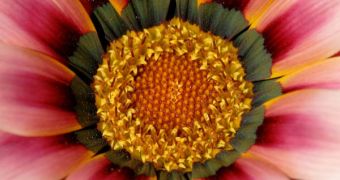Jupiter's ice-covered moon Europa is one of the safest bets in the Universe of finding life, or, otherwise put, it's one of the few places other than the Earth that astronomers believe it's able to sustain life to some extent. The experts are not talking about mammals, or other higher creatures, but about simple organisms, such as bacteria, microbes, fungi, and even some primitive forms of vegetation. Despite the fact that the tiny rock looks frozen and inhospitable, astronomers believe that a huge ocean of liquid water could exist under the crusty surface.
There are, of course, those who say that astronomers should use the complex telescopes and probes at their disposal to scan icy moons and asteroids, such as Europa, not only for chemicals that could, at least in theory, support life, but also for things that are detectable. For instance, observatories could look for the signature of flowers similar to those that can be found in the desolate Antarctic landscape back on Earth. If water exists on a distant planet, it may not be so far-fetched to believe that at least some amounts of carbon dioxide exist as well. And plants are well known for converting CO2 into oxygen, as this process (photosynthesis) is what made life possible on our planet.
“I would say the strategy in looking for life in the universe [could be] to look for what's detectable, not what's probable. We have a tendency among the theorists in this field to guess what's probable. In fact, our guesses are likely to be wrong. We never had as much imagination as nature,” Physicist and Futurist Freeman Dyson said on Saturday, speaking at a conference in Cambridge, Massachusetts, NewScientist reports.
According to experts, flowers existing somewhere else in the solar system, or in other parts of the Universe, could give away their position through a phenomenon called retroreflection, which basically means that they reflect the light coming in from stars back into space. If a celestial body has a higher-than-expected retroreflection rate, then this could be a sign that at least vegetation may exist on that body. And, experts say, it's a lot easier to design a space probe when you know exactly what you're looking for, than to outfit it with numerous instruments, in hopes that, maybe, you hit the “jackpot.”

 14 DAY TRIAL //
14 DAY TRIAL //